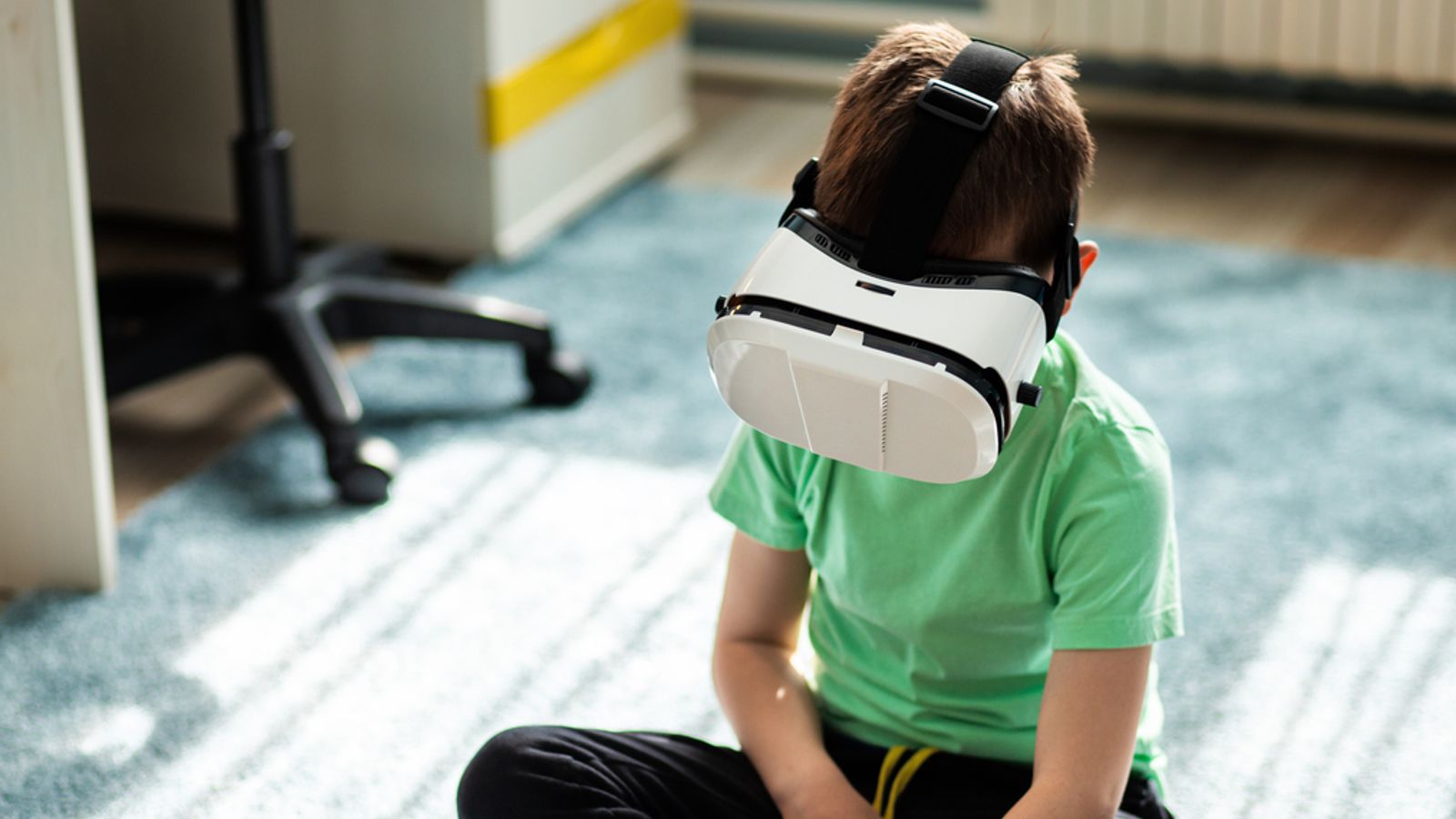Sex offenders are targeting children inside virtual reality environments, a new study has warned – with some victims even suffering the physical response to being touched without their consent.
The “phantom touch” sensation is one of several forms of exploitation detailed in research commissioned by the NSPCC charity, with a warning these immersive online platforms are presenting a “monumental hurdle” for law enforcement and efforts to protect vulnerable youngsters.
It said virtual reality, where users put on a headset that puts them inside a digital space, potentially online with others, was giving offenders new opportunities to commit their crimes.
Sumaiya Zahoor, the NSPCC’s policy officer for child safety online, told Sky News the increasing use of haptics in virtual reality devices, whereby vibrations and other forces give the user physical feedback to their actions, made experiences “much more immersive” but also “a lot more intrusive than you would anticipate”.
As well as the phantom touch, the Child Safeguarding & Immersive Technologies report also highlighted how abuse perpetrators used avatars to desensitise their victims and “normalise” their behaviour.
One victim cited in the report said they had been left with “mental scars” by their experience.
“It was so normal for [the offender] to have relationships with minors, in the bubble that we lived in,” they said.
“I came out of that situation with severe trust issues, and I am not sure when things will go back to normal.”
‘Deceptive’ visuals empower offenders
Ms Zahoor said the cartoonish visuals of many virtual reality experiences could be “deceptive”, with approachable avatars that make children think they’re talking to someone of their own age.
“That’s really where the concern is – parents and children might look at those graphics and be thinking this is completely safe and appropriate,” she added.
Offenders are also using virtual spaces to foster “communities” where they share abuse material with others.
The UK’s Online CSA Covert Intelligence Team, which sees specialist law enforcement personnel go undercover to expose such criminal activity, was among the contributors to the report.
“Virtual reality and the metaverse have the potential to be a monumental hurdle for law enforcement, criminal justice, and the safeguarding of vulnerable people,” it said.
Read more science and tech news:
Call Of Duty using AI to track hate speech
How heartbreak impacts the brain and body
Plans under way to restart COVID surveillance
Be the first to get Breaking News
Install the Sky News app for free
Richard Collard, head of child safety online policy at the NSPCC, said the findings emphasised the importance of upcoming legislation to tackle internet harms.
The Online Safety Bill has been long delayed but is being debated in the House of Lords this week as parliament returns from its summer break.
It has been heavily criticised by tech companies and privacy campaigners, with WhatsApp and Signal among the platforms threatening to leave the UK if they are forced to comply.
They have said the bill would undermine their commitment to user security, as it could allow for the scanning of encrypted messages to crack down on abuse content.
But Mr Collard said: “These shocking findings should be a wake-up call to us all about the harm young people are facing when engaging with immersive technology.
“Technology will continue to progress, and so must we to ensure that we can understand the existing and emerging risks that young people face in these virtual spaces.”
Please use Chrome browser for a more accessible video player
The report, carried out by research firm Limina Immersive, said the government must ensure the Online Safety Bill is continuously reviewed to remain effective as new harms emerge.
It also said police need more funding and guidance on how to deal with simulated offences in virtual settings.
Tech companies should also ensure virtual worlds have robust child safety features and reporting systems, it added.
In the meantime, the NSPCC urged parents to make themselves familiar with any safety features and controls their child’s headset might have, including blocking other users, restricting what games they can play, and setting physical boundaries around their character when playing online to stop others getting too close.









